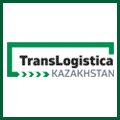by Hendrike Kühl, Policy Director, IUMI
According to the World Health Organization, there are currently more than 100 COVID-19 vaccine candidates under development, with a number of these in the clinical trial phase and a few already being administered. Estimates suggest that the logistics industry will have to deliver ten billion doses in the next couple of years. The global scale of this undertaking will pose major challenges to logistics networks around the world. The anticipated demand for these sensitive products will propel the necessity for an efficient global supply chain to an unprecedented scale.
Experience from the spike in demand for personal protection equipment and the need to dis-tribute these quickly to countries around the globe provides insights into some of the pain points which are likely to occur during a complex logistical opera-tion to deliver much needed vaccines. This paper provides an overview of the risks and challenges foreseen by members of the International Union of Marine Insurance’s (IUMI) Cargo, Loss Prevention, and Legal & Liability Committees as well as several Secretaries of IUMI member associations based in various countries on five conti-nents, hence reflecting regional differences.
Three themes were resounding in all comments: maintaining required temper-atures throughout the entire supply chain; COVID-19 vaccines will be high value goods, thus exposed to the risk of theft; and the lack of capacity in the supply chain. The proverbial ‘elephant in the room’ were concerns related to temperature control. IUMI emphasizes this as the biggest challenge. Most attention in this paper is therefore paid to this issue. Preparing for and responding to these risks will facilitate the smooth delivery of the vac-cines. Marine insurers are enablers in this process for an extraordinary logistical under-taking of global scale, which will help the world to return to a ‘new normal’ following the corona pandemic. Insurers’ experience in risk handling and mitigation should be offered to clients proactively.
Risks related to temperature control
Several vaccines are currently under development, some well advanced in the approval process or even post it. Different vaccines will have different temperature requirements for transport and storage. It remains to be seen how many of the approved products will necessitate tem-peratures as low as -80°C for safe trans-port and storage. Some vaccines may fall into the cold chain or refrigerated goods range of +2 to +8°C for transport and stor-age, which would simplify the distribu-tion as this range is common to pharma-ceutical products. Given the expeditious development of the vaccines, insufficient stability data might, however, lead to strict temperature requirements throughout the entire supply chain.
For either temperature scenario, well-organized shipping and precise han-dling will be essential. If extremely low temperatures will have to be met, spe-cial refrigerated containers, along with rigorous temperature monitoring and quality control, special packaging such as cold-resistant vials, and qualified or validated boxes will be required. Dry ice may be necessary for the transport which in some countries is only available in limited quantities. Standard Operating Procedures (SOPs) detailing shipping and handling requirements such as marking1 are crucial to ensure all intermediaries and carriers along the supply chain are well informed on the nature of the prod-uct being shipped.
Compliance with the SOPs monitored by marine risk engineers can help to iden-tify potential pain points. The use of real-time tracking and temperature monitoring throughout the course of transit should be in place, e.g. with established escalation pro-tocol, including immediate notification of appropriate carrier points of contact in the event of a temperature deviation or delay in transit. Where operationally feasible, tem-perature checks at interfaces are desirable to allocate potential mishandling at cer-tain stages of the transport. This may not always be possible as the temperature data loggers are often placed inside the cartons. It is therefore recommended to check the quantity of phase change material such as dry ice at each stage and be able to replenish as needed. Given the stringent temperature requirements, it is all the more important to ensure these are strictly adhered to through-out the supply chain as the entire shipment may otherwise be rejected.
The strain on the transportation infra-structure, including reefer trucks and suit-able warehouses, could be problematic due to the mass distribution of the vaccines. Even though pharmaceutical companies are familiar with the shipping of sensitive prod-ucts, the volume is likely to present a chal-lenge in some parts of the world. A strong infrastructure, including pre-established networks of warehouses and transportation capabilities, will be necessary to ensure a smooth distribution of vaccine supplies.
Different regulatory regimes will have to be adhered to across the entire logistics chain. It will be challenging to ensure compliance within such a short time frame and on a global scale consider-ing that various vaccines are still under development and have diverse charac-teristics and requirements. Rejection by customs and national health authori-ties could be a consequence if consist-ent compliance cannot be demonstrated. Legislation regarding carrier’s liability in different countries should also be con-sidered. Some carriers may not have the necessary expertise in taking care of such temperature-sensitive goods.
Interestingly, the level of concern varies across geographies. IUMI noted that from a contractual point of view for the transport by sea, COVID-19 vaccines do not require any special treatment since the contractual infrastructure already exists for similar high value and perishable cargoes. Others noted that in their geographies purpose-built air-freight terminals are equipped with elec-tronic temperature monitoring technology and cold rooms with various temperature settings to handle commodities with differ-ent temperature requirements. On-tarmac coolers are also available to protect the tem-perature-sensitive cargo when it is trans-ported between flights.
At the same time, insufficient cooling capabilities of cold storage warehouses, sea containers, road transport and air-freight may occur in several geographies. Most warehouses are currently only capa-ble of cooling down to -25°C. Ordinary reefer containers are capable of cooling down to -30°C with limited capacity of ‘super freezer’ units which can freeze down to -60°C. Most trucks are capable of cooling down to -25° to -30°C.
Temperature controlled airfreight con-tainers with external cooling technol-ogy are available, but the use of dry ice or liquid nitrogen containers is more common. However, currently these are available in limited quantities only and most likely not adequate to respond to the scale of the imminent requirements. Moreover, for air transport the use of packaging which can maintain the necessary temperatures for at least 24 hours longer than the antici-pated transit time is recommended. As noted above, measures should be in place to ensure re-icing can take place while the cargo is in transit.
Loss prevention measures play an impor-tant role to mitigate risks in the cool chain. Risk management techniques such as man-aging the value of the shipments, i.e. avoid-ing significant accumulation, will be essen-tial to prevent a breach in the supply chain and ensure there is sufficient redundancy to guarantee the products will continue to move and the population gets vaccinated. Contingency measures in place with the carriers in case of delays are equally impor-tant. Carriers’ response plans to safeguard the vaccines should be readily available in case of delay in transit.
Risk of theftIn some countries a spike in theft and hijacking of these highly valuable consign-ments is possible, hence security is of utmost importance. Arrangements must be in place to ensure that shipments remain secure from tampering and theft. Processes are in place already in some countries, but the huge volume of vaccine shipments will require early planning to ensure they are scalable. Supply chain security programmes to pro-tect deliveries of COVID-19 vaccines are likely to include the use of armed escorts (where allowable), additional truck security and driving in secure convoys, depending on the level of risk in each geography. Some countries may even consider military sup-port to ensure vaccine deliveries are not delayed in any way. A global alert issued by Interpol to law enforcement agencies in its 194 member countries warning them to prepare for organized crime networks tar-geting COVID-19 vaccines, both physically and online, indicates the urgent necessity to put in place appropriate security measures.
Industry standards such as those from TAPA to ensure highest possible safety measures are in place for storage facilities, trucking and parking security should be applied. The use of secure parking places, GPS tracking of vehicles and/or contain-ers, multiple drivers and explicit routing instructions are essential components to avoid theft. Containers will ideally be fitted with special high security seals which have tracking and anti-tampering devices attached. Pre-notice/pre-alert notifica-tions for outgoing and incoming shipments along with full transparency throughout the supply chain is crucial. Based on lessons learned from both violent and non-violent theft of personal protective equipment in some countries, pro-active risk manage-ment from ‘cradle to grave’ will be essential.
Governments and transport authorities will also need to pave the way to ensure that these special goods are given top priority at sea- and airports. Proper protocols must be in place to not only ensure effective tem-perature management but also security is maintained whilst the consignments are in the care and custody of the ports.
Lack of capacity in the supply chain
The COVID-19 pandemic continues to have a massive impact on air travel. The number of passengers and flights has decreased significantly since the beginning of the crisis and is nowhere near to return to pre-COVID levels. Passenger flights used to provide capacity for airfreight, but with the decline of these flights, a major share of capacity has been taken out of the market.
While IUMI recognizes that the quick-est mode of transport will likely be by air, airfreight may not be the only solution and is merely part of the wider logistical effort. Managing the cold chain will be more dif-ficult in some geographies than in others. While some countries are likely to have suf-ficient capacity, many will not. Some compa-nies who heretofore have not specialized in cold chain/pharma shipment, storage, and transportation are likely to be used and thus introduce a new risk. A full understanding of the capabilities of the freight industry must therefore be taken into consideration across different geographies.
While many countries do not necessar-ily expect to have the vaccines produced domestically, some countries are confident to meet the demand by domestic providers. This would reduce several hurdles related to multiple legs of transit, including overseas voyages, discharge and customs clearance for onward inland movement in the coun-tries of import. Given these hurdles, ship-ments done on a direct or limited trans-shipment basis are preferred due to reduced cargo handling and margin for errors.
Source baltictransportjournal.com




.jpg)






